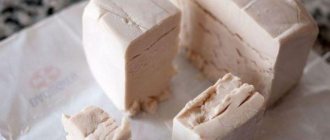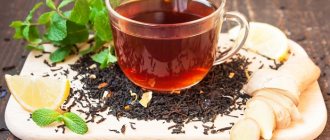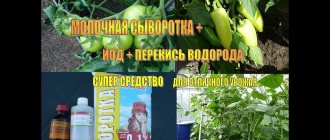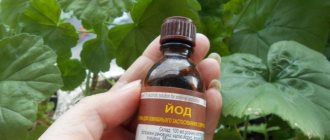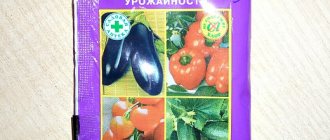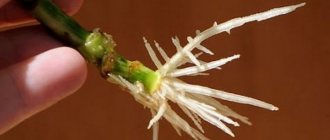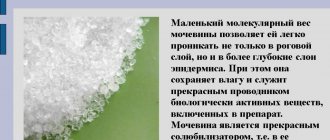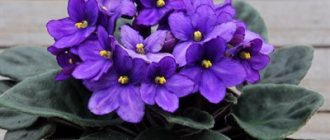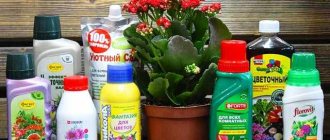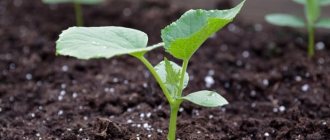Phosphorus is a very important element that is necessary for the development of all plants. When there is a deficiency, gardeners and gardeners apply phosphorus fertilizers. We will tell you what types they come in and how to use them correctly on your site.
Phosphorus controls metabolic processes occurring in the plant and is a source of energy. This element is part of the cell nucleus and many substances that play a major role in the life of flora. In addition, in mineral form, phosphorus is involved in the synthesis of carbohydrates.
Therefore, only with a sufficient amount of phosphorites do plants develop correctly, grow quickly and bear fruit well. Phosphorus fertilizers promote the growth of the plant's root system and increase productivity, so they are especially important for vegetable, grain, berry and fruit crops.
As you can see, the importance of phosphate fertilizers is difficult to overestimate. The peculiarity of using such fertilizers is that you don’t have to be afraid of “overfeeding” the plants with phosphorus. An excess of this element in the soil will not harm green pets, since they absorb it in the amount that the plant needs for proper development. Of course, this does not mean that you can feed the plants without measure, but you should not worry if you added more fertilizer to the soil than was indicated in the instructions.
The role of phosphorus fertilizers in plant development
Phosphorus controls constant metabolic processes and is part of DNA and RNA. Significantly increases drought and frost resistance of plants. Young, intensively growing seedlings especially need phosphorus.
Phosphorus starvation. It manifests itself in a change in leaf color to purple, bronze and a delay in flowering and ripening.
Deadlines for submission. Phosphorus fertilizers, including water-soluble ones, are not washed out of the soil. They are embedded closer to the roots, applied for digging in the fall or spring: sparingly soluble phosphorus fertilizers (phosphate rock) are applied in the fall, superphosphates - in the spring.
Phosphorus for plants: signs of deficiency
Fertilizers are intended to ensure the full development, flowering, and fruiting of vegetables, fruit trees, berry bushes, and ornamental crops. A deficiency of any element has a detrimental effect on the general condition of plants and leads to a decrease in yield.
Phosphorus is no exception, so a deficiency of this substance in the soil should not be allowed. The plants themselves signal that there is not enough phosphorus in the diet. Signs of deficiency:
- deformation of leaf plates and premature falling;
- color change. Green color gives way to crimson, violet, purple. Dark necrotic spots appear on the leaves of the lower tier;
- slowing down and stopping growth;
- poor development of the root system.
Timely application of fertilizers containing the phosphorus needed by crops will prevent problems, preserve and increase the yield at the dacha, and protect plants from stress.
Popular phosphorus-containing fertilizers
Superphosphate
The most popular phosphorus fertilizer is double superphosphate; it is most often used in the garden. Simple and double superphosphate differ from each other not only in phosphorus concentration: simple superphosphate (16–22%), double (up to 45%). In addition, double superphosphate also contains about 15% nitrogen compounds and 6% sulfur, and, unlike simple superphosphate, it does not contain gypsum. Both are suitable for use in all areas and for any crops: flowers, vegetables, trees.
Bone meal, or phosphonitrogen
Natural fertilizer (contains 15–35% phosphorus) – a product of bone processing. In addition to phosphorus, bone meal contains calcium, biologically active substances and trace elements (magnesium, sodium, iron, copper, zinc, manganese, cobalt, iodine). Serves as a comprehensive fertilizer for vegetables (tomatoes, peppers, cucumbers) and flowers. Indoor crops - palm trees, vines, ficus - respond especially well to bone meal. In its properties, bone meal occupies an intermediate position between superphosphate and phosphate rock. Completely decomposes in the ground in 5–8 months.
Phosphorite flour
Slightly soluble phosphorus fertilizer (phosphorus - no less than 20%, calcium - no less than 34.8%) with a very long-lasting effect when applied in high doses before planting (from 100–200 to 500 g per 1 m2). They are used only for autumn digging on acidic soils or for preparing acidic composts - manure and peat: in an acidic environment, phosphorus gradually transforms into a form accessible to plants. Do not use on soils with neutral and alkaline reactions. Phosphorite flour cannot be mixed with lime fertilizers and ash; it can be mixed with ammonium sulfate, ammonium nitrate, potassium chloride and simple superphosphate.
Flowers
| Stores sell various fertilizers for indoor flowers. Is it worth buying ready-made fertilizer mixtures individually for each flower and adhering to one or another recommendation for feeding? Or can you dilute violet fertilizer and use it for all types of plants? |
In indoor plants, the supply of nutrients in the soil substrate is limited by the volume of the pot. Therefore, it is small and should be systematically replenished. For normal growth and development, plants need nitrogen, phosphorus, potassium and trace elements. If you are well acquainted with the agricultural technology of the flower being grown and know which fertilizer is best suited for it, then you can create a nutrient mixture and fertilizing schedule yourself. Garden fertilizers can be used, they are usually cheaper and more economical. When in doubt, it is better to purchase a ready-made, specially developed fertilizer mixture for a specific plant.
The only element whose dosage must be approached with extreme caution is nitrogen . It is poorly retained in the soil. Nitrogen reserves must be replenished regularly. The need for it is greatest at the beginning of plant growth. But it is not correct to think that once growth begins, all house flowers should be fed equally. In many crops (woody, rhizomatous, bulbous), before the above-ground part begins to grow, new roots appear that can supply the plants with nutrients. Such plants can use nitrogen immediately at the first signs of growth of the above-ground part.
In tuberous and root-tuberous crops, the stem and leaves first develop due to the nutrients stored in the root-tuber. These plants are usually kept in dry soil during dormancy. During dormancy, the roots die. At the first sign of awakening, the plants begin to be watered. In damp soil, tender young roots grow, still unable to absorb anything other than water. Conventional solutions of mineral fertilizers can cause burns and death. True roots develop somewhat later. Therefore, in this case, it is advisable to fertilize soil with nitrogen after the plants have fully developed 2–3 leaves. Foliar mineral fertilizing at the beginning of shoot and leaf growth is also not advisable for tuber crops, since even weak fertilizer solutions can cause burns.
Nitrogen fertilizers stimulate growth, the formation of young shoots and leaves, and prevent the transition to a dormant state. In autumn, with the onset of short daylight hours, young shoots and leaves become elongated and chlorotic due to lack of light and heat. If flowers form on them, they are weak and frail. In the autumn-winter period, the growth of indoor evergreen plants must be stopped. When preparing flowers for rest in winter, nitrogen is excluded from feeding mixtures.
Lack of nitrogen causes decreased growth and loss of decorative qualities. When plants are overfed with nitrogen, intensive development of the vegetative mass occurs to the detriment of flowering. Other side effects may also occur. Excess nitrogen fertilizer is very harmful to cacti. The stems burst due to the fact that the skin grows slower than the internal tissues. It is not recommended to feed weakly or poorly rooted cuttings with nitrogen. The cuttings begin to grow rapidly. And insufficiently developed roots do not have time to provide water and other nutrients to fast-growing shoots. Nutrients to young tissues begin to flow from older tissues of the cutting, which will lead to their depletion and drying out.
Phosphorus ensures the growth of the root system, active flowering and fruiting. Almost all phosphorus fertilizers are poorly soluble in water and remain in the soil in undissolved form for a long time. This allows you to create a long-term supply of phosphorus in the substrate. Simple and double superphosphate are added to the soil before planting. And often this is enough until the next transplant. In some cases (for shrubs and actively flowering crops) additional fertilizing with phosphorus is required. The need for it increases during the formation of inflorescences, flowering and seed formation. For liquid fertilizers, it is better to use potassium phosphates and ammophos, since they dissolve in water better than others. Superphosphate is also suitable for this if you first pour boiling water over it and leave for 3–4 days. Phosphorus does not prevent plants from going into a dormant state. Therefore, it can be applied in the second half of summer and autumn. Phosphorus fertilizers increase plant resistance to adverse conditions, diseases and pests. Aqueous soil and foliar fertilizing with a 1% solution of phosphorus fertilizers is often used to protect flower crops from leaf spot, rot, powdery mildew, aphids and scale insects.
Phosphorus deficiency is accompanied by a sharp retardation of growth of both above-ground and underground organs. The leaves turn yellow at the edges and gradually fall off. Flowering and fruit ripening are delayed, flowering time is reduced. Productivity and decorativeness are reduced. Excess phosphorus causes premature ripening and aging of plants. If there is an excess of phosphorus, the plant does not receive other nutrients, such as iron, zinc, manganese and other trace elements. And this causes chlorosis along the edges of the leaves.
Potassium is also very important for plants. They are fed in the active growth phase, during the formation of fruits, tubers, bulbs and during the preparation of the plant for dormancy. Potassium is included in many fertilizers: potassium chloride, potassium salt, potassium sulfate, potassium magnesium, potassium nitrate. The first two contain a lot of chlorine and should not often be used on indoor plants. Potassium nitrate, which contains nitrogen, should be used for feeding only during active growth.
The lack of potassium stops growth, shortens internodes, changes the shape of leaves, reduces productivity and resistance to fungal diseases. Necrotic, brown spots and streaks form on the leaves, which gradually merge and cause browning, death and premature leaf fall.
Microelements are contained in all types of organic fertilizers, in ash, and in various composts. When they are added to the soil, plants do not need additional feeding with microelements. Plants need trace elements in very small quantities. It is better not to use them than to overestimate the dose. Overdose causes more harm than good. Plants may die or slowly dry out.
Microelements usually used in the form of foliar feeding. Plants are sprayed with a solution containing 2 g of boric acid, 2 g of ammonium molybdate, 2.5 g of copper sulfate, 2.5 g of manganese sulfate, 2.5 g of zinc sulfate, 2 g of cobalt sulfate in 10 liters of water. You can buy ready-made powder or tablets of microelements and use them strictly according to the instructions.
See the article - Preparing fertilizers for indoor plants
Basic complex fertilizers with phosphorus
Double nitrogen-phosphorus fertilizers:
Ammophos: a complex water-soluble phosphorus-nitrogen fertilizer (phosphorus - 50%, nitrogen - 12%), where both elements are contained in an easily digestible form. Nitroammophos: nitrogen-phosphorus fertilizer (phosphorus - 11-24% and nitrogen - 16-23%), suitable for use on soils with normal or high potassium content.
Diammophos (ammonium hydrogen phosphate, diammonium phosphate) Phosphorus-nitrogen fertilizer (phosphorus - 46-50%, nitrogen - 18%). Diammophos reduces soil acidity and is used as a pre-sowing fertilizer for most vegetable crops.
Double phosphorus-potassium fertilizers:
potassium phosphate.
Triple complex fertilizers: ammophoska and nitrophoska, magnesium ammonium phosphate.
Azofoska (nitroammofoska) Complex nitrogen-phosphorus-potassium fertilizer (the content of nitrogen, phosphorus and potassium is approximately equal) is one of the most effective mineral fertilizers, where phosphorus is in a water-soluble form. Nitroammofoska can be used as a universal fertilizer on any type of soil. It is used for pre-sowing and planting application, as well as for fertilizing.
DIY making
The concentration of phosphorus in self-made fertilizer is low, but it is natural, does not harm human health and does not accumulate in the soil. To prepare compost, organic matter is used, which includes pumpkin seeds, fish and meat, corn flour and legume waste. These components are placed in a compost pit, when they are completely rotten, fertilizer is used to feed the plants.
Features of fertilizing with phosphorus fertilizers for vegetable, fruit and flower crops
Tomatoes . When planting, 15 g of simple superphosphate is added to the hole. If no fertilizer was applied during planting, then during flowering you can apply liquid fertilizing: 100 g of simple superphosphate per 10 liters of warm water. Watering at the rate of 0.5 liters per bush. Or add half a teaspoon of azofoska to one hole when planting seedlings of tomatoes, peppers and eggplants.
Apple tree . For a young apple tree (up to 4 years old), 70 g of double superphosphate is added to the tree trunk in the fall; for an adult apple tree (5–10 years old), 100–200 g of double superphosphate. In case of phosphorus starvation, trees can be sprayed with a solution of superphosphate (50 g per 10 liters of water).
Raspberries . In the fall, add 15–20 g of double superphosphate or 40 g of simple superphosphate per 1 m2 of plantation. Leaf feeding (raspberries, currants, gooseberries) is useful using nitroammophoska: 20 g per 10 liters of water.
Grape . Phosphorus is necessary during flowering and for ripening berries. However, a lack of phosphorus is a rather rare phenomenon: it manifests itself in the fact that grape leaves become small and flaccid; with a severe deficiency, they curl into a tube, the berries crumble and the clusters become loose. Therefore, the first fertilizing with phosphorus-containing fertilizer is done at the beginning of the flowering phase, the second - in mid-summer. For feeding, make a solution of 15 g of ammonium nitrate and 25 g of superphosphate per 10 liters of water.
Decorative perennials. In the fall, for digging, add the following to the flower garden per 1 m2: ammophos - 15–25 g or diammophos - 20 g.
Indoor flowers. When transplanting, add 0.3 teaspoon of bone meal per 1 liter of fresh soil.
Instructions for use
The instructions included with each commercially produced fertilizer indicate consumption rates, which depend on the method of application.
Adhere to the following dosages:
- Simple superphosphate. Take 40-50 grams of fertilizer per square meter of garden when digging up the soil. For root watering, use 15 to 20 grams of fertilizer per square of plantings.
- Double superphosphate. Used in spring or autumn, when digging up the ground on the site. Per square meter of garden you will need from 20 to 30 grams of fertilizer.
- Phosphorite flour. It is applied only when digging the soil in a concentration of 30 to 40 grams per square of garden.
- Ammofoska. When planting seedlings of fruit crops in open ground, add 2 grams of fertilizer to each hole. For foliar feeding, use 20 grams per 10 liters of water.
- Nitroammophoska. It is used for both root and foliar feeding of plants, at a concentration of 30 grams per 10-liter bucket of water.
